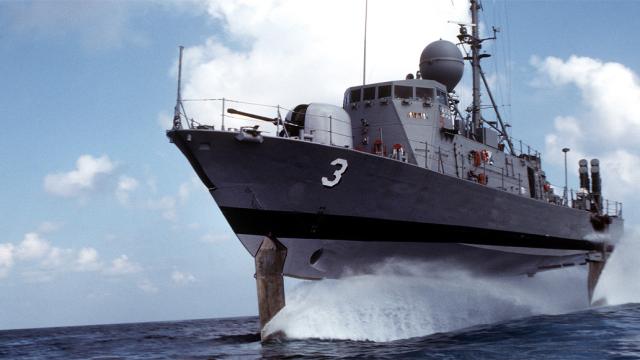The invention of hydrofoils was one of the most revolutionary developments in the history of marine engineering. Hydrofoils are vessels that use wing-like foils below the hull in order to reach greater speeds on the water. The “wings” are submerged so that the hull can be above the water, which allows the boat to go much faster since water is about 1000 times more dense than air.
When Italian inventor Enrico Forlanini built a full-scale hydrofoil boat in 1906, the technology behind travelling on the sea took a hyper-leap. With a ladder system of foils under its hull, the winged ship reached a top speed of 68 km/h using a 60 hp (45 kW) engine driving two counter-rotating air props. Remember, the top speed of ships was about 40-50 km/h at this time.

Enrico Forlanini built a 60 hp hydrofoil at the beginning of the 20th Century. Photo: National Geographic Magazine/Wikimedia Commons
Sadly, despite their promise, hydrofoils did not take leading role in marine technology — they were popular for only for a brief period of time during the 60s and 70s thanks to the amazing Soviet hydrofoil passenger ships. The sensitive, complex and expensive technology is hard to maintain, and was passed over in favour of other modern technologies such as hi-tech catamaran, trimarans, pentamarans, wave-piercing hulls, SWATH hulls.
But throughout the last century an incredibly diverse fleet of these aeroplane-ship hybrid were built. The following are just a fraction of them.
Alexander Graham Bell’s fastest hydrofoil design, The HD-4, reached a speed of 114 km/h in 1919.
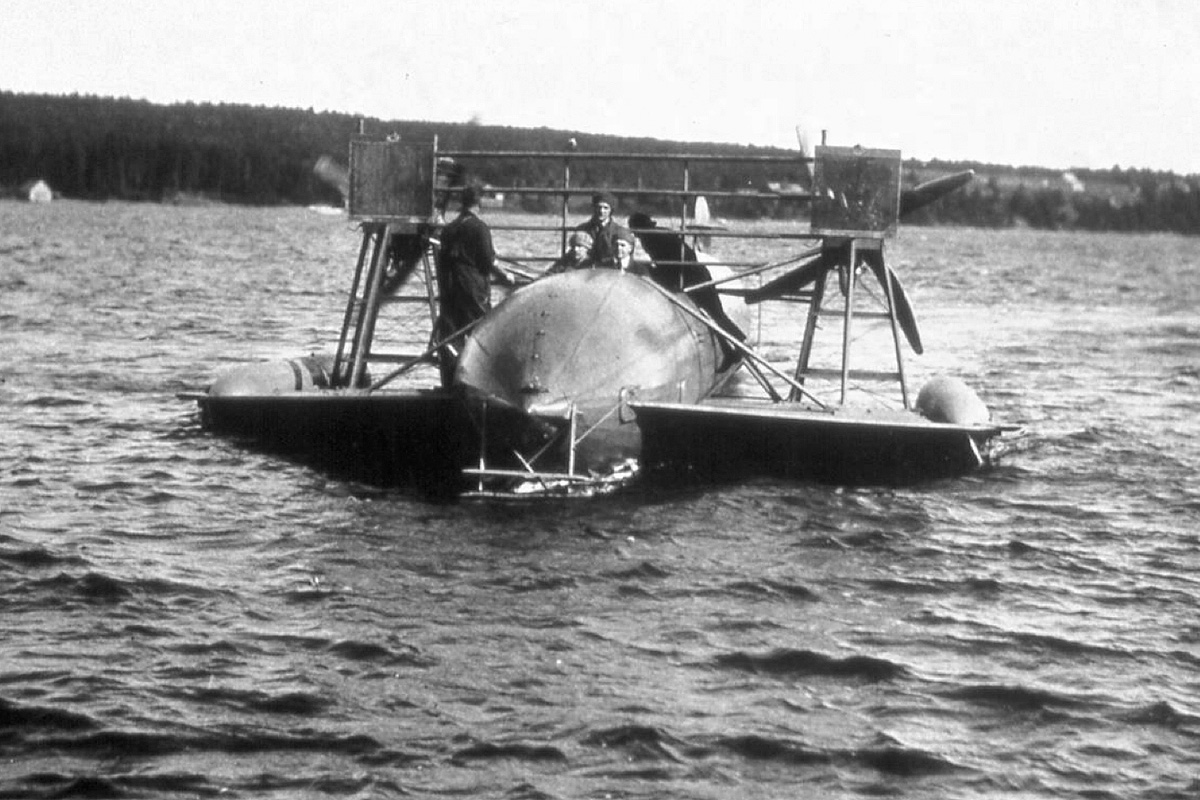
Photo: Our Baddeck
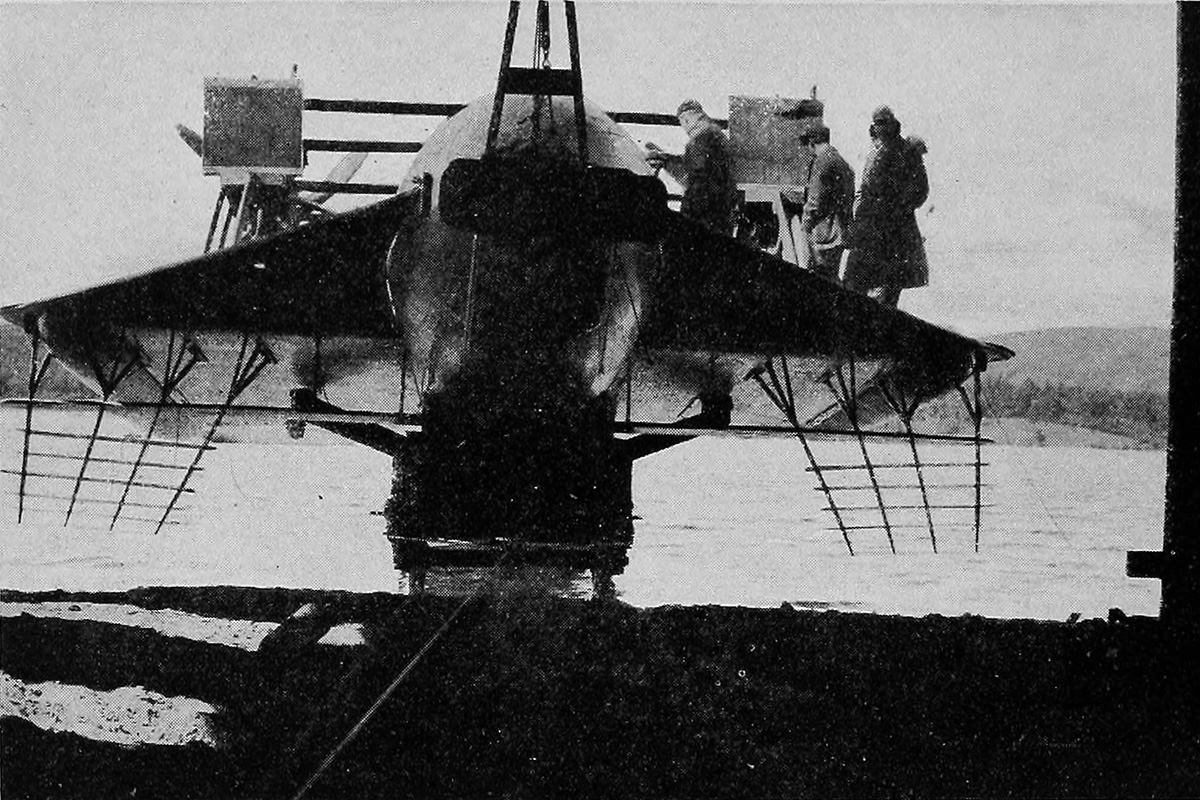
Photo: Internet Archive Book Images
This is the White Hawk, an ultra-high-speed hydrofoil powered by a 4,000 hp jet engine. It was designed and piloted by Frank and Stella Hanning-Lee in the early 50s.
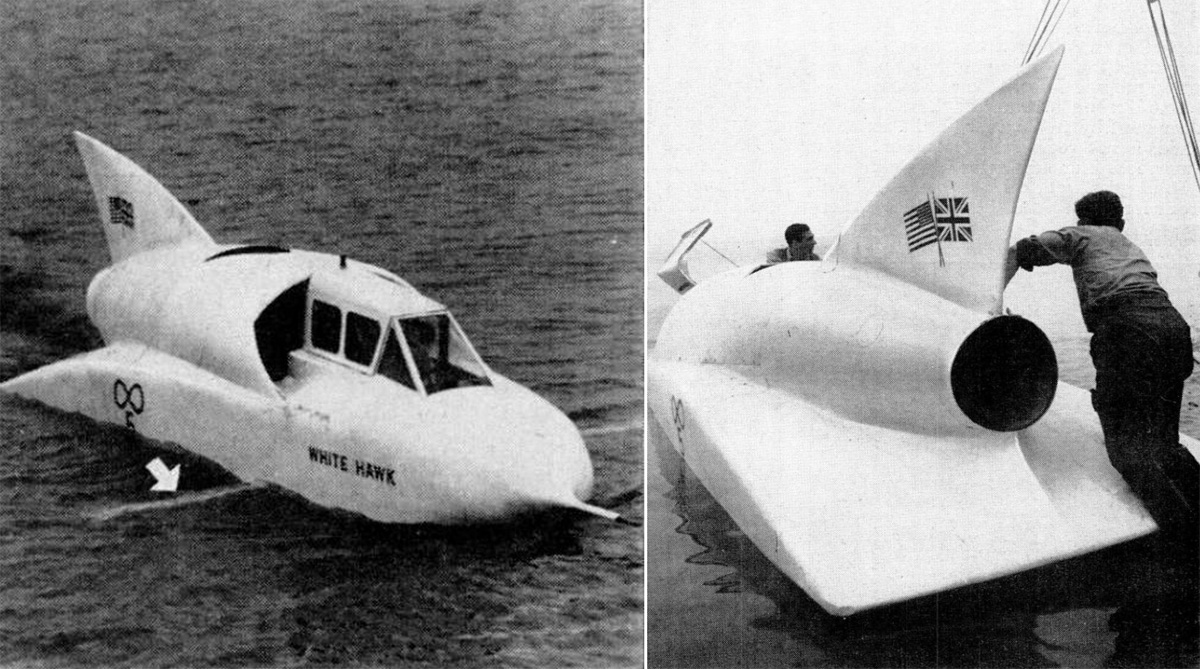
Photo: Popular Mechanics, Aug 1953
The Carl XCH-4 “Canard” hydrofoil was a U.S. Navy test boat in the 50s.
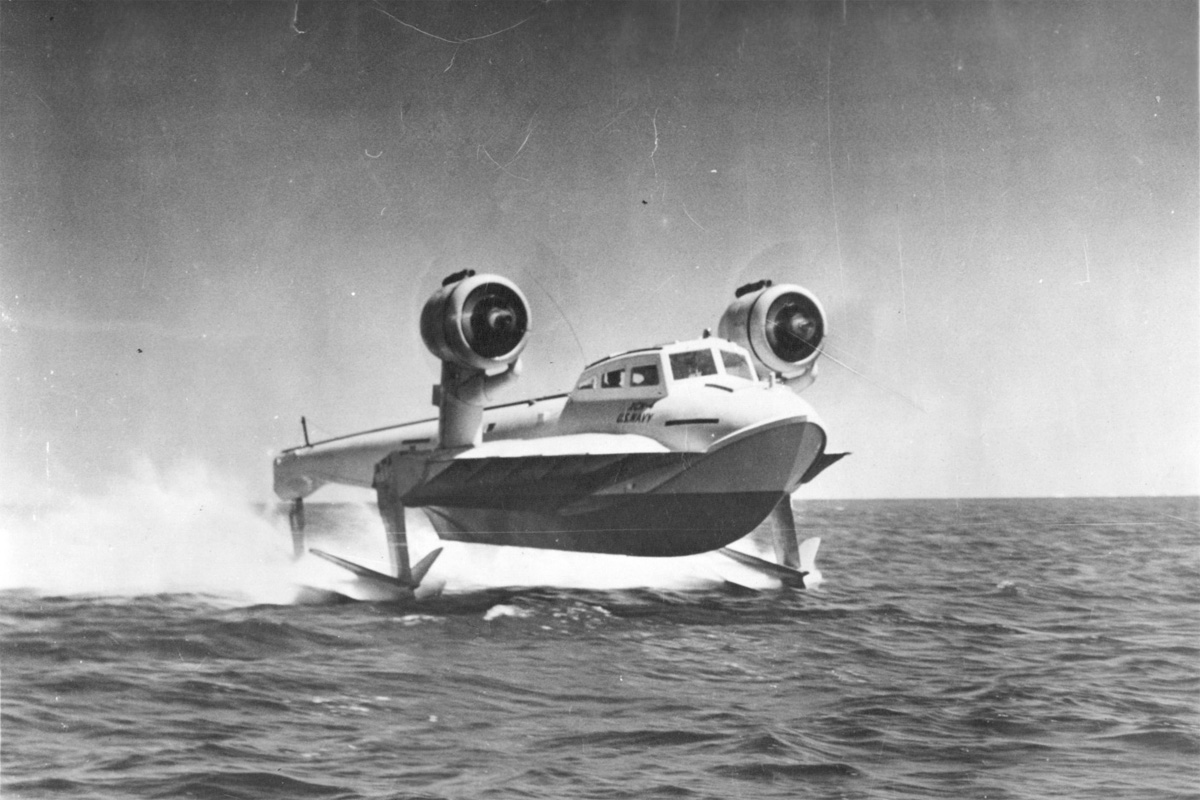
Photo: U.S. Navy/Wikimedia Commons
The Lantern (HC-4), a Navy prototype, was one of the earliest hydrofoils to use electronic controls. It first flew in 1953 and reached a maximum speed in calm water of only 18 knots.
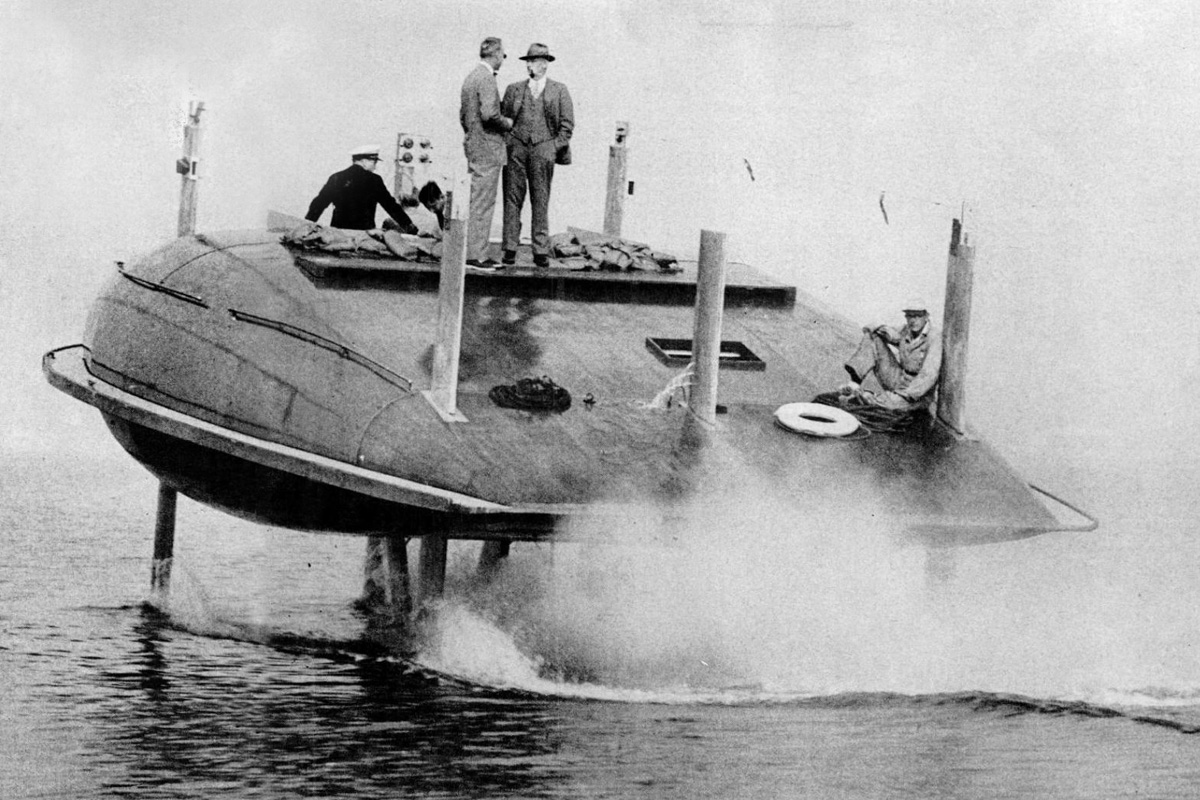
KC-B, the Canadian Navy’s experimental hydrofoil, could do 96 km/h.

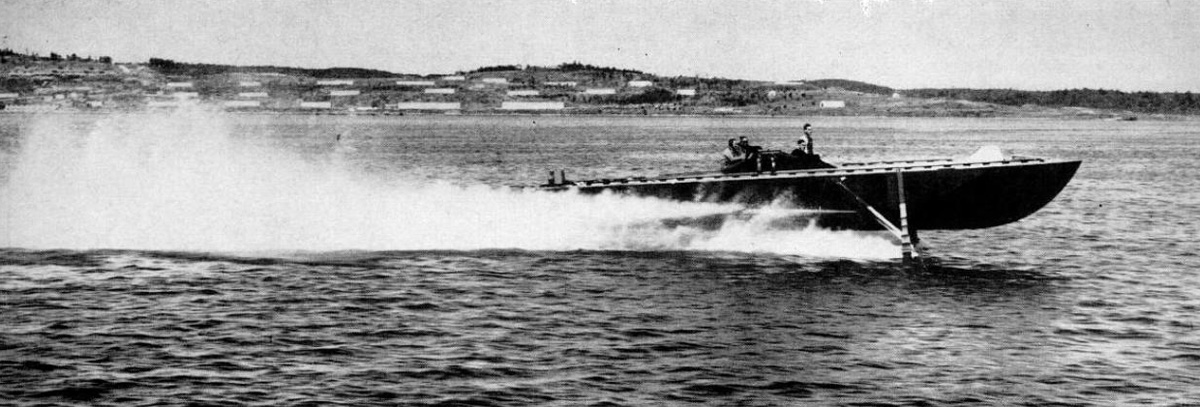
Photo: Life, 27 Sep 1954
The nuclear-powered 320-passenger hydrofoil ocean liner concept that never came true.
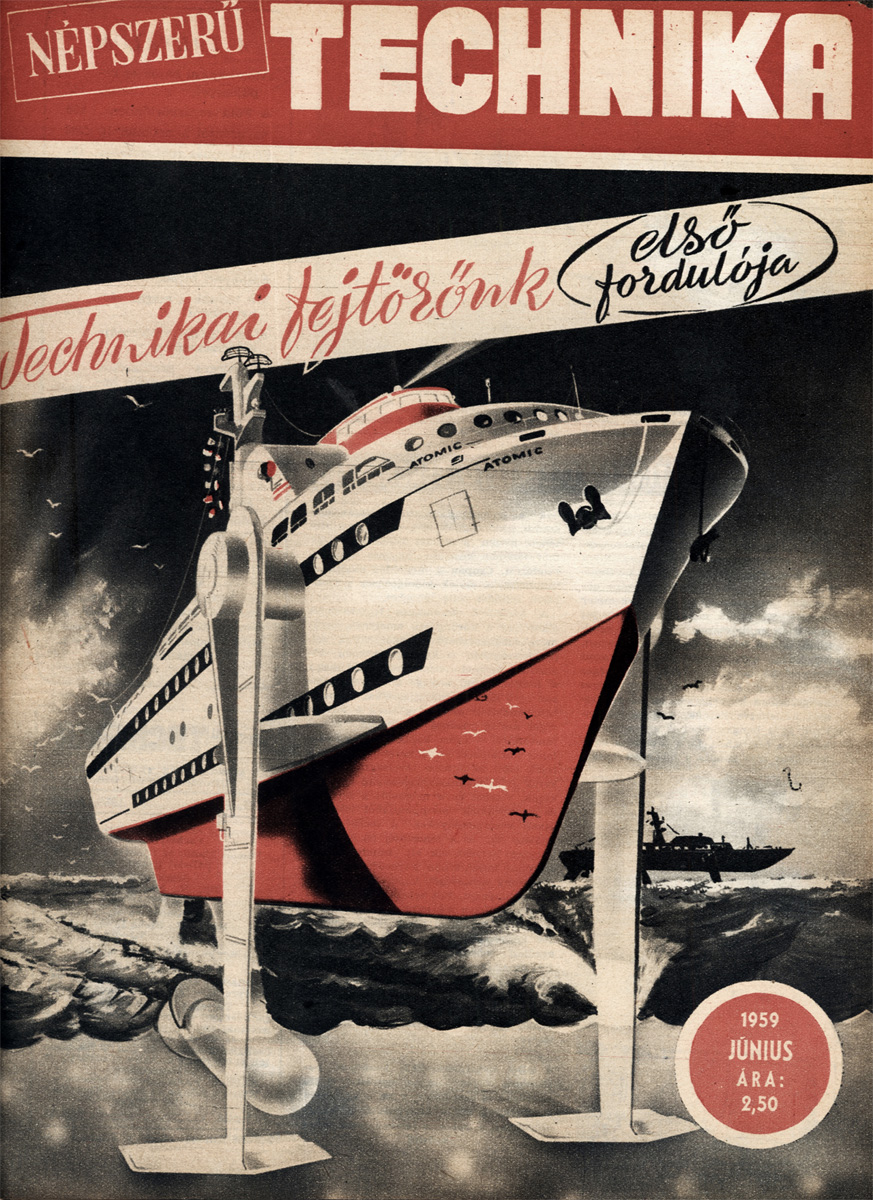
Image: Népszerű Technika, 1959. június.
The Raketa (Rocket), a 60-person passenger hydrofoil, was in serial production between 1957 and 1976 in the Soviet Union. A total of 389 units were produced. It cruised at 60 km/h with a 500 km range.

Photo: Fox Photos/Getty Images
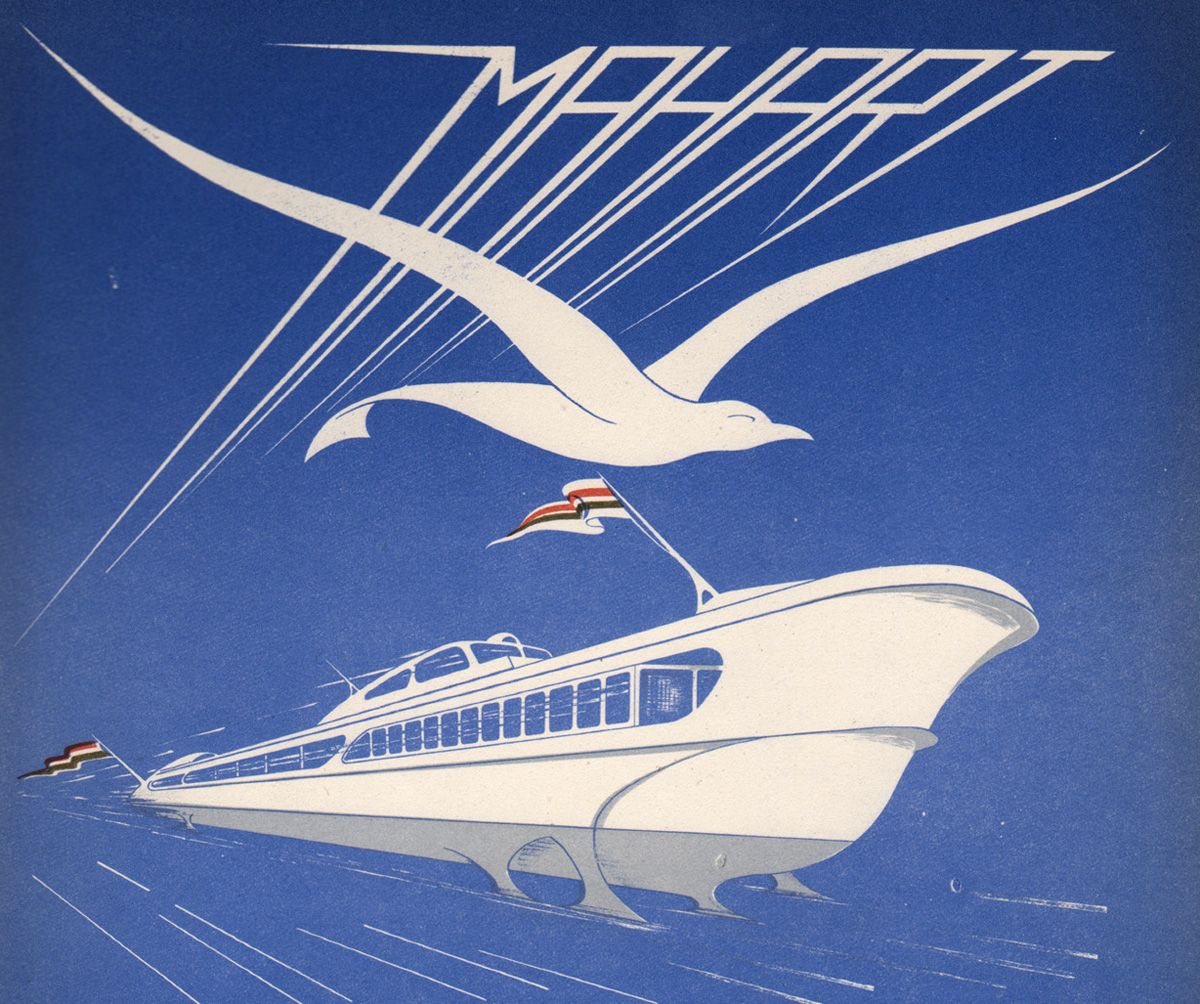
Image: Advertising poster for the Hungarian Navigation Co., circa 1960
The larger, Meteor-type Soviet hydrofoil was in production from 1960-1994. In 2003, two newer units were produced. Its top speed is 66 km/h and it carried 112-123 passengers.

Photo: Dmitry Lovetsky/AP
The sea-faring version of the Meteor was the “Kometa,” with larger wings, bigger draught to manage the waves in coastal seas.
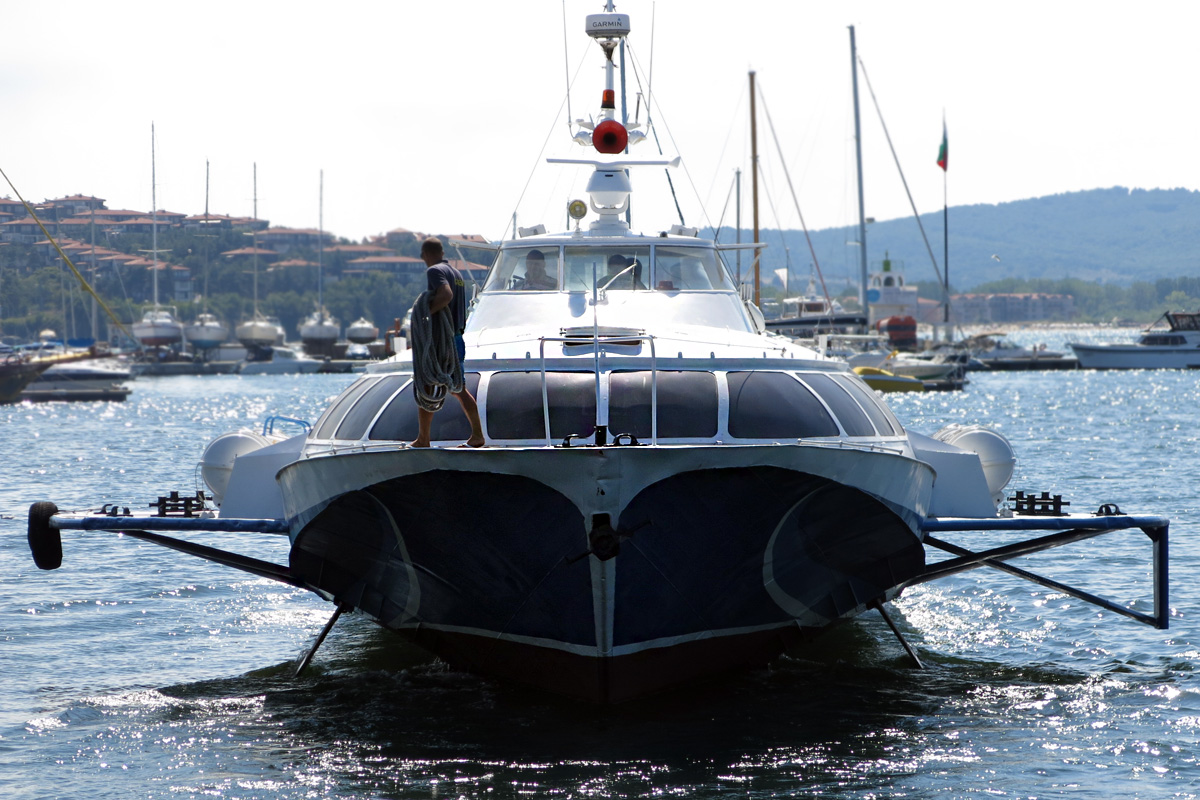
Photo: Attila Nagy/Gizmodo
The one-and-only Chaika (Seagull), a 30-seater Soviet built river bus capable of 95-100 km/h top speed, wasbuilt in 1962.

Photo: N. Akimov/Central Press/Getty Images
The mighty Burevestnik-type high speed vessels had two IL-18 aeroplane engines on their sides, with a power of 2.700 HP each. The type was produced from 1964 to 1979 in small number, its cruising speed was 93 km/h, top speed at an estimated 150 km/h.
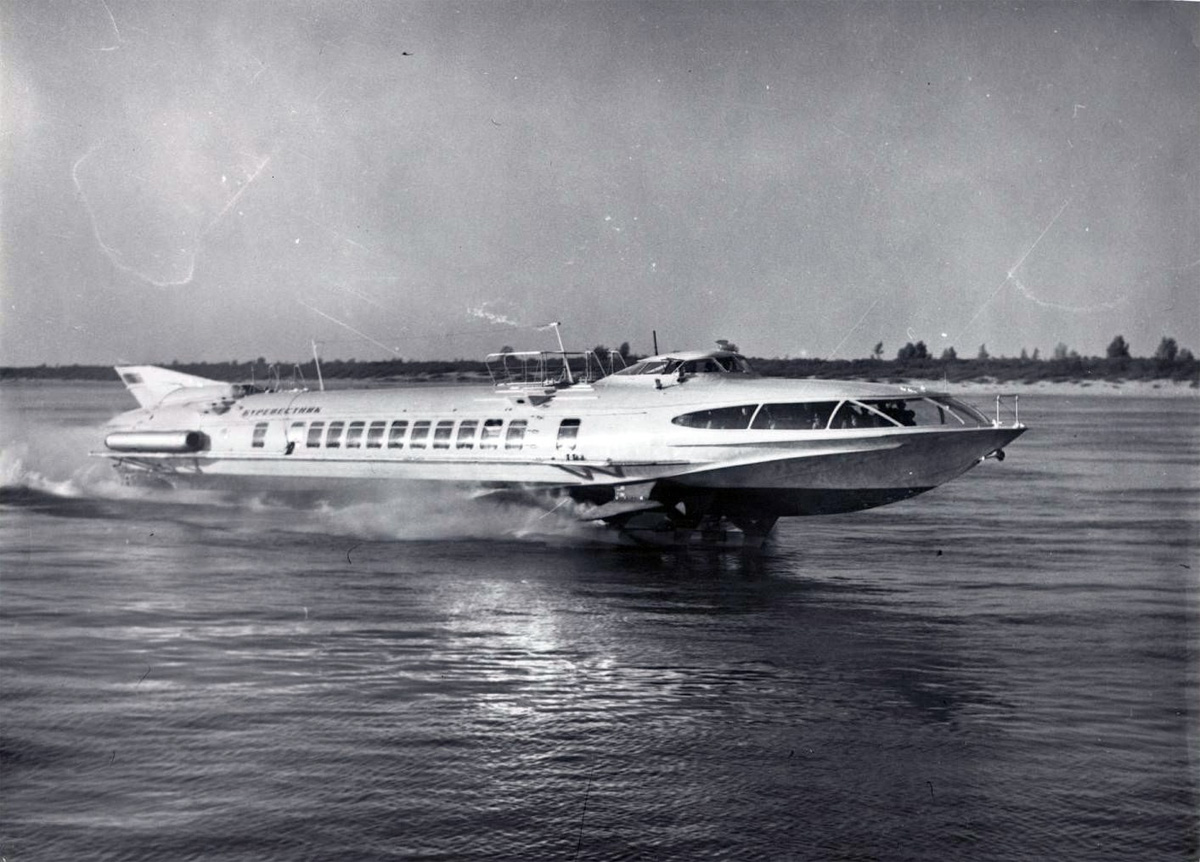
Photo: rhzm.ru
The Soviet Turya-class fast attack torpedo boats were in service starting in 1972.
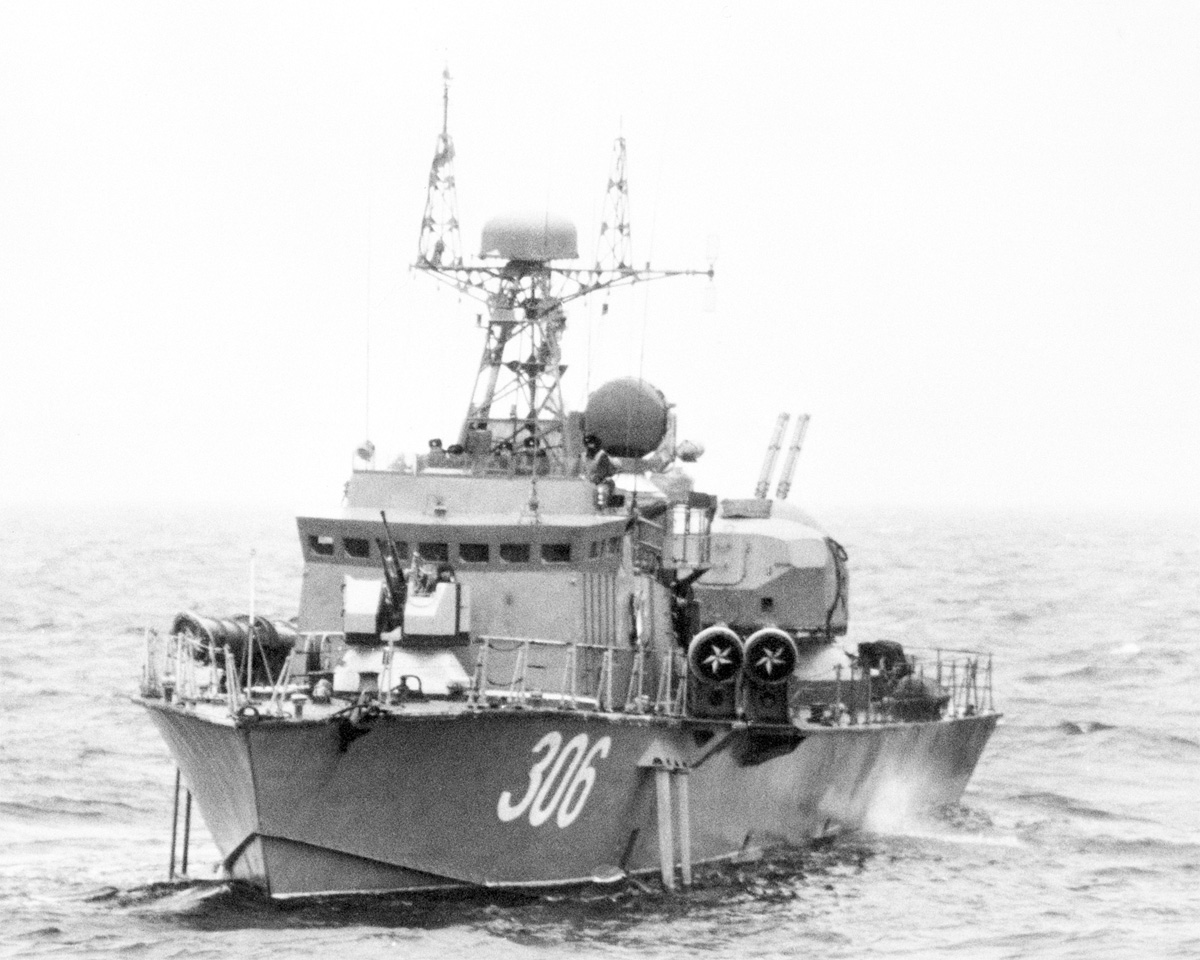
Photo: DoD/U.S. Navy/National Archives
USS Plainview (AGEH — 1), the U.S. Navy’s first hydrofoil research ship, was the world’s largest hydrofoil in 1969. It was powered by the same type of engine used in F-4 Phantom fighter jets, plus two diesel engines. The ship was decommissioned in 1978, sold for scrapping, and abandoned on the Columbia river.

Photo: Ebay
Boeing designed and built several hydrofoil craft for the U.S. Navy, including six Pegasus-class hydrofoils (PHM-1 to 6), a series of fast attack patrol boats from 1973 to 1977.
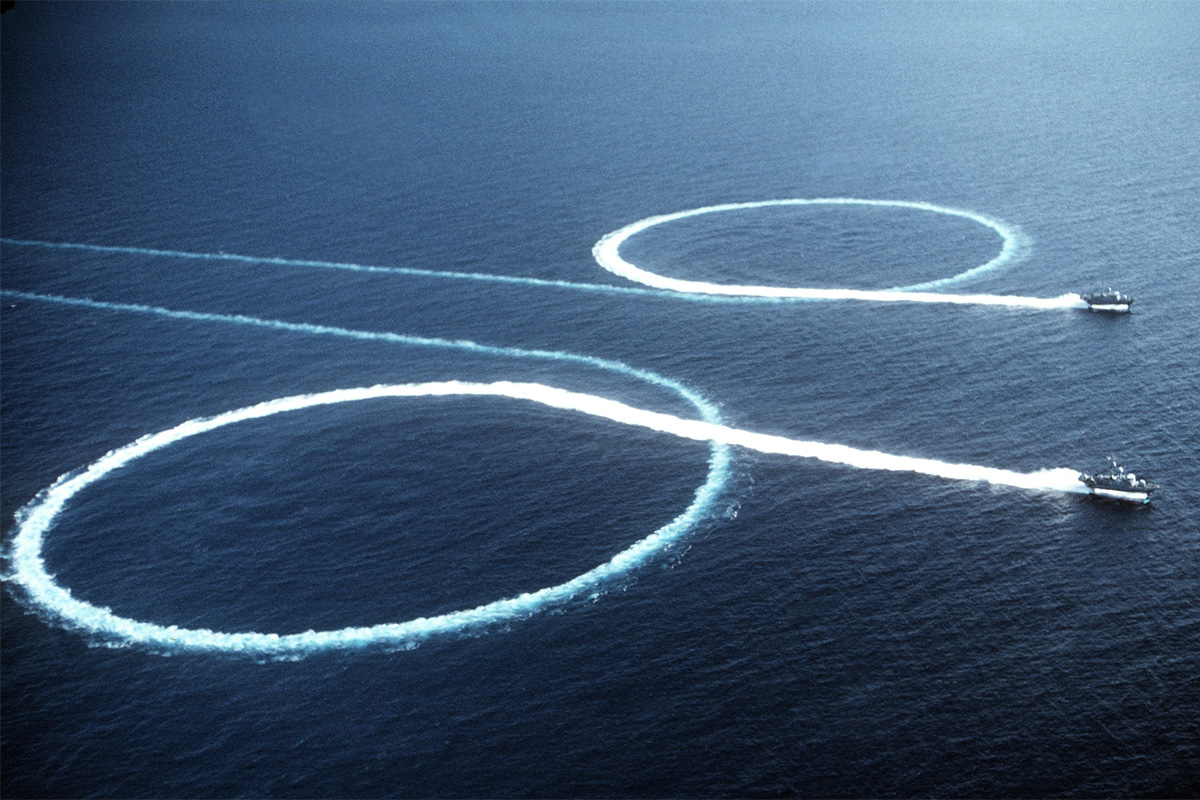
Photo: DoD/U.S. Navy/National Archives
The Boeing 929 Jetfoil, launched in 1974, could carry up to 400 passengers.
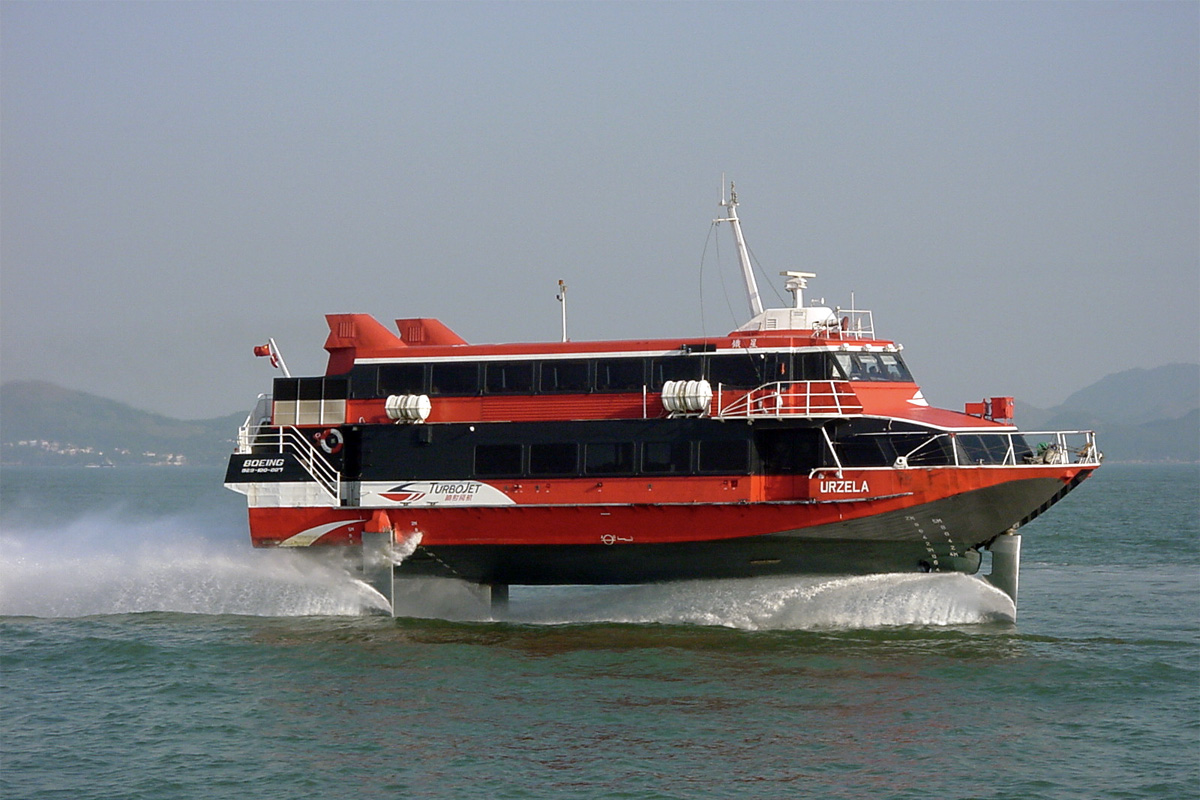
Photo: SoHome Jacaranda Lilau/Wikimedia Commons
Sea Shadow (IX-529) was an experimental stealth ship built by Lockheed for the U. S. Navy in 1985. It had a “SWATH” hull design: Below the water were submerged twin hulls, an aft stabilizer, and inboard hydrofoil.
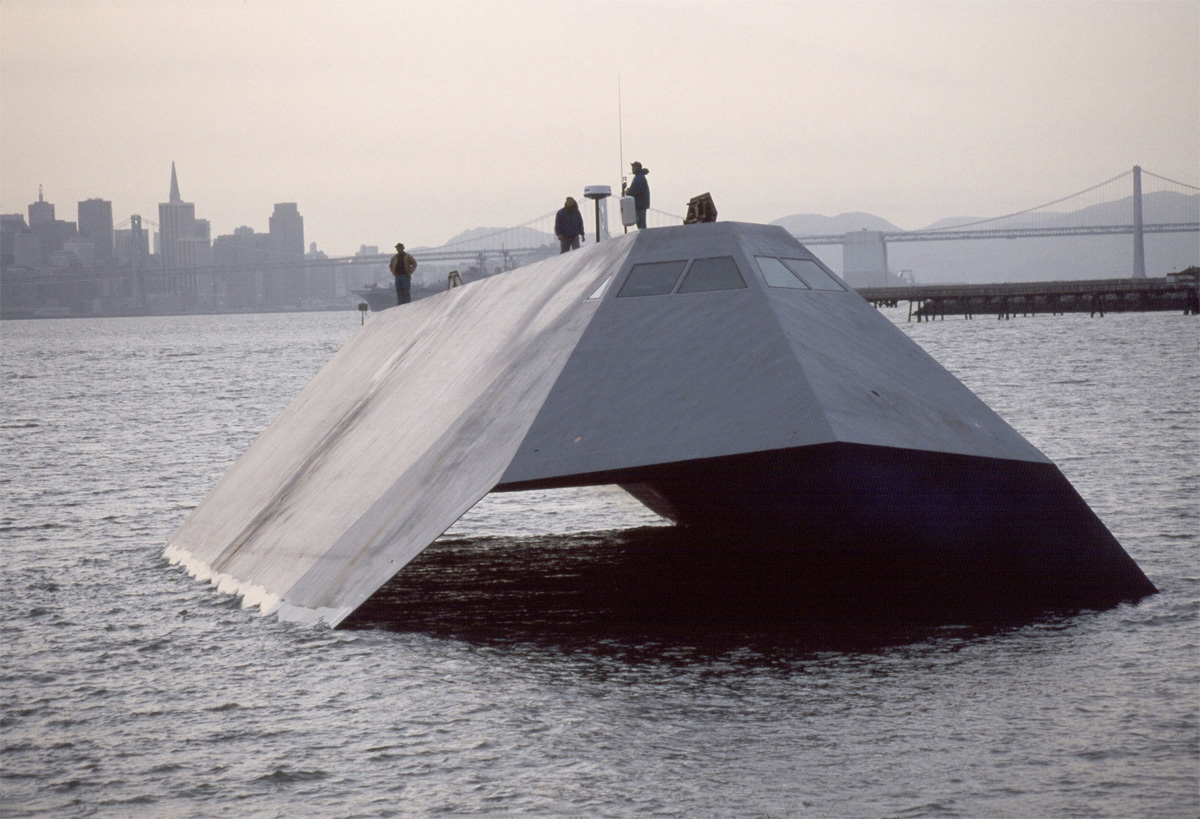
Photo: U.S. Navy
Soviet-designed Voskhods are one of the most successful passenger hydrofoils, recently manufactured in Russia and Ukraine. They are in service in more than 20 countries.
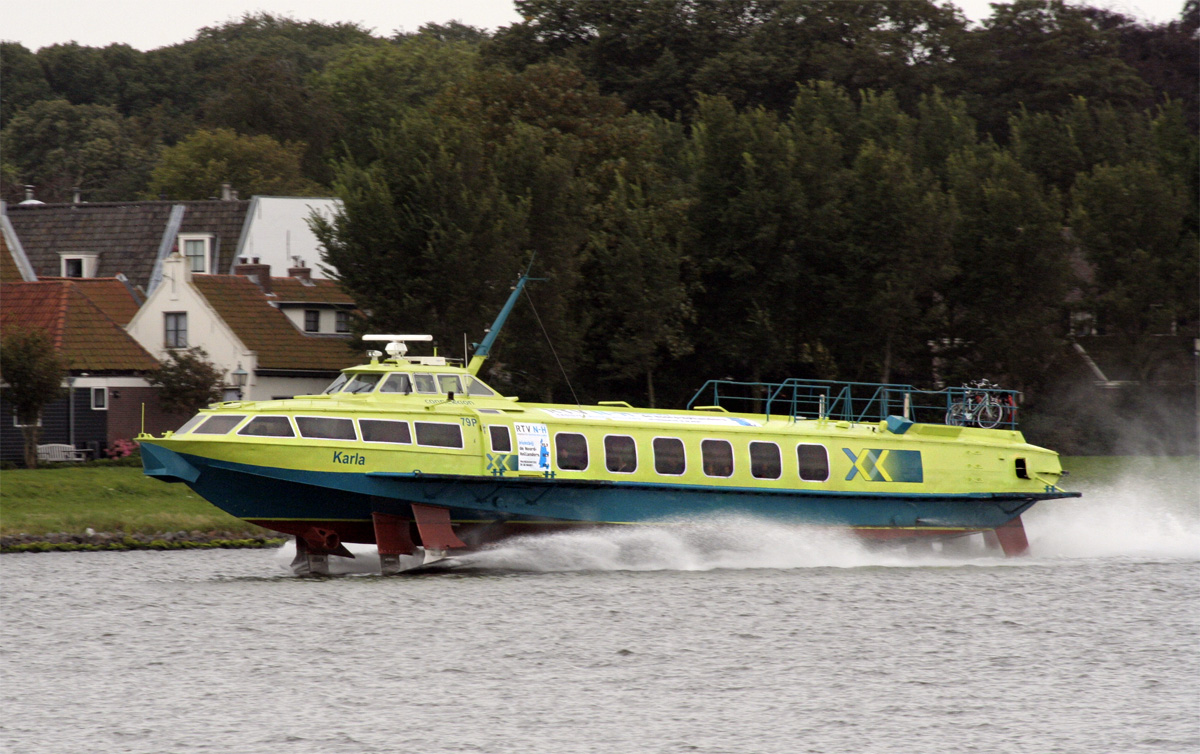
Photo: Mauritsvink/Wikimedia Commons
Frank M. Rinderknecht, the Swiss car visionary that created the natural gas-powered Rinspeed Splash, used hydraulics to transform the car into a boat. It was premiered at the Geneva Motor Show in 2004.

Photo: Rinspeed
A Meteor hydrofoil yacht was built in 2006 for Alexander Khloponin, a Russian businessman and governor of Krasnoyarsk Krai.

Photo: Avenir Systems
The FSWH37 is an Italian made hydrofoil, completely built in aluminium alloy, except for the foils which are in high resistance steel.

Photo: Intermarine S.p.A.
The latest hydrofoil boats come from Russia, these glass bottom boats, the LOOKER, seem to revive the hydrofoil technology.
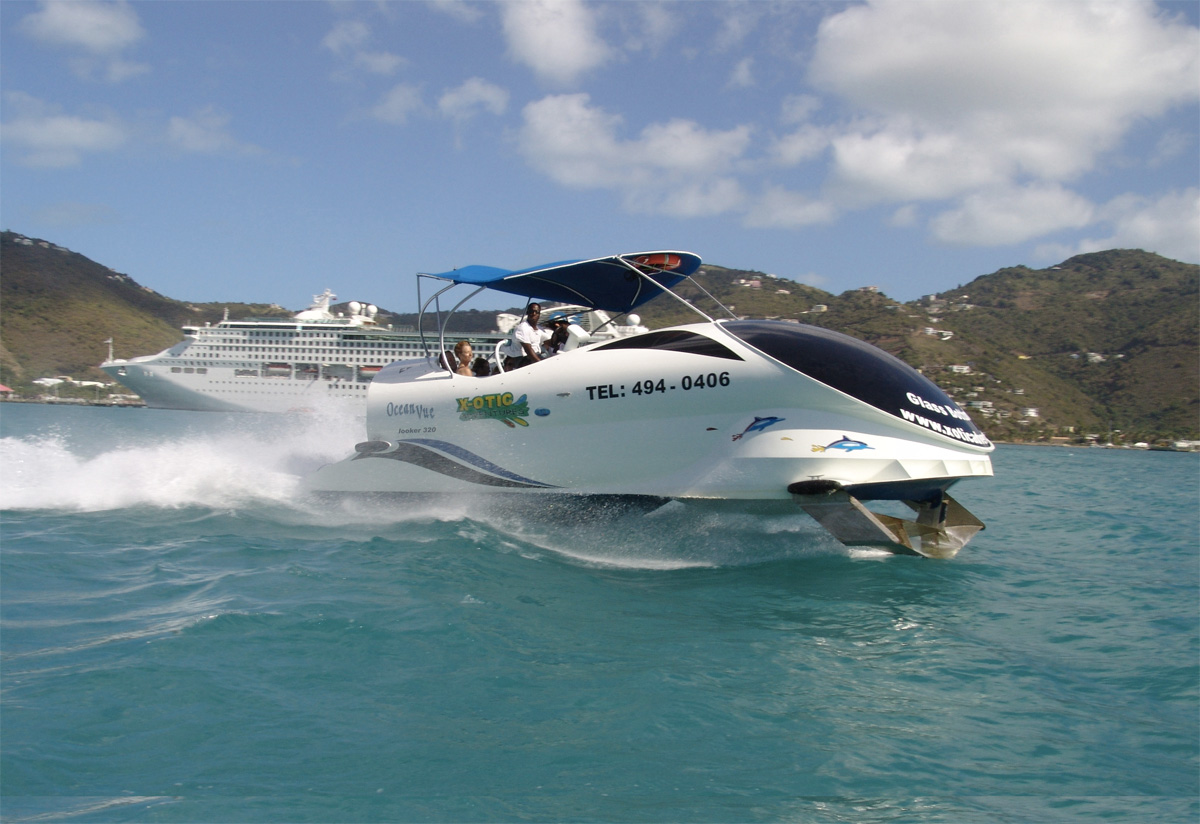
Photo: Paritetboat Co.
Here’s hoping for a bright future for the hydrofoil.
Top photo: the hydrofoil patrol combatant missile ship USS TAURUS (PHM 3), 1990 (DoD/U.S. Navy/National Archives)
